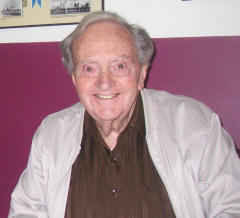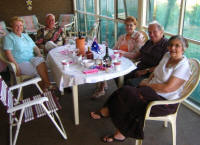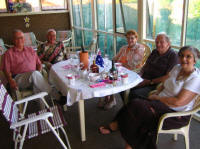|
We need your help to keep the KWE online. This website
runs on outdated technology. We need to migrate this website to a modern
platform, which also will be easier to navigate and maintain. If you value this resource and want to honor our veterans by keeping their stories online
in the future, please donate now.
For more information, click here.
|
|||||||||||||||
 |
|||||||||||||||
| Back to "Memoirs" Index page | |||||||||||||||
Victor A. DeyMelbourne, Australia - "The velocity of this barrage was unbelievable in its intensity. It went on for most of the day and it caused my mate, Larry Francisco, to say, “ I don’t think I will reach 22,” his birthday being the 12th. We survived." - Victor A. Dey
|
|||||||||||||||
An Australian in KoreaAbout 17,000 Australians served in Korea during the period 1950 t0 1956. From the very start of the war until the cease fire, nine ships of the Royal Australian Navy served in the Korean Campaign on a rotation basis. During the same period, the Royal Australian Air Force was represented by the No. 77 Squadron. Our Army contingent consisted of the 3rd Battalion of the Royal Australian Regiment (RAR), which was stationed in Japan at the start of the Korean War. The 3rd Battalion served in Korea for the duration of the war. Personnel were rotated as the Aussie soldier signed on for a 12-month tour of duty in Korea. The 1st Battalion of the RAR arrived in Korea in March of 1952, and was replaced in March 1953 by the 2nd Battalion of the RAR. There were also Australian Army and Air Force Nursing Sisters involved in the Korean War. On a personal basis, I joined the Australian Army in June 1948 for a period of six years. At the outbreak of the Korean War, our government called for volunteers to make the 3rd Battalion (which was under-strength) fully operational. At that time I was serving in the Service Corps (supply and transport), and as the army was recruiting only infantrymen for Korea, I applied for a transfer. This procedure took until March 1952 before my transfer finally came through. On leaving Australia in a draft of 22 diggers, our flight took us to Labuan in North Borneo for an overnight stop, on to Hong Kong for another overnight stop, then on to Japan. Most Australian camps were around the Kure/ Hiro area. We trained in the bull ring, route marched, and spent time at Haramura, which was once an old Japanese Army training camp during World War II. Finally on the 6th of June 1952, I was posted to Korea, where I joined 1 Platoon, A Company of the 3rd Battalion. At that time, it was in reserve. Toward the end of June, we were sent into the front line, taking over from a Canadian battalion. That part of the line was called the Jamestown Line. We were to remain in that position for over three months. All that time we lived on American C-rations. During that period in the front line and on a daily basis, we Australians did picket duty, eight-man ambush patrols, and 15-man fighting patrols. On the night of July 12, 1952, the 1st Platoon was chosen to raid the Chinese position directly opposite of us and snatch a prisoner. A Lieutenant and 25 men were directed to attack Hill 115. That raid turned extremely sour for us Australians--the afternoon strafing by the Air Force, the late afternoon artillery barrage, and just before we actually attacked there was heavy machine gun fire directed onto our target. In hindsight, it appears that the enemy was reinforced and waiting for us. The enemy was much stronger than we anticipated. We were engaged by heavy machine gun and sub-machine (burp gun) fire when the Lieutenant was hit and went down. With the patrol taking heavy casualties, it was decided to withdraw. At that point we realized that the Lieutenant was missing, along with two other diggers. The continued machine gun/sub-machine gun and mortar fire coming in on us made it extremely difficult for the non-wounded to get the wounded down the hill and back across the valley. In actual fact, we lost three men that night. (They have never ever been accounted for.) Fifteen were wounded, leaving eight able-bodied men to fight the rear guard action and get the wounded to safety. Although life went on after that, to me it put a whole different scenario on my views of war. By the 11th of September, I guess you could say we were really seasoned diggers. On the morning of the 11th, the Chinese decided to give us an artillery barrage. The velocity of this barrage was unbelievable in its intensity. It went on for most of the day and it caused my mate, Larry Francisco, to say, “ I don’t think I will reach 22,” his birthday being the 12th. We survived. Some months later, in fact, in February of 1953, we came off Hill 355 (often called Little Gibraltar) for a rest. We were sent to an American camp called Camp Casey. Even though the temperature was sub-zero, the facilities were first class to a weary bunch of diggers. I was lucky enough to make it through to the 6th of June 1953 without a scratch. With my allotted time in Korea up, I took a reposting to Ebisu Camp in Tokyo, Japan, finally arriving back home here in Australia in April of 1954. Many sad memories--and many good memories to share with comrades on days of reunions.
|
|||||||||||||||
|
|||||||||||||||
 |
|||||||||||||||




